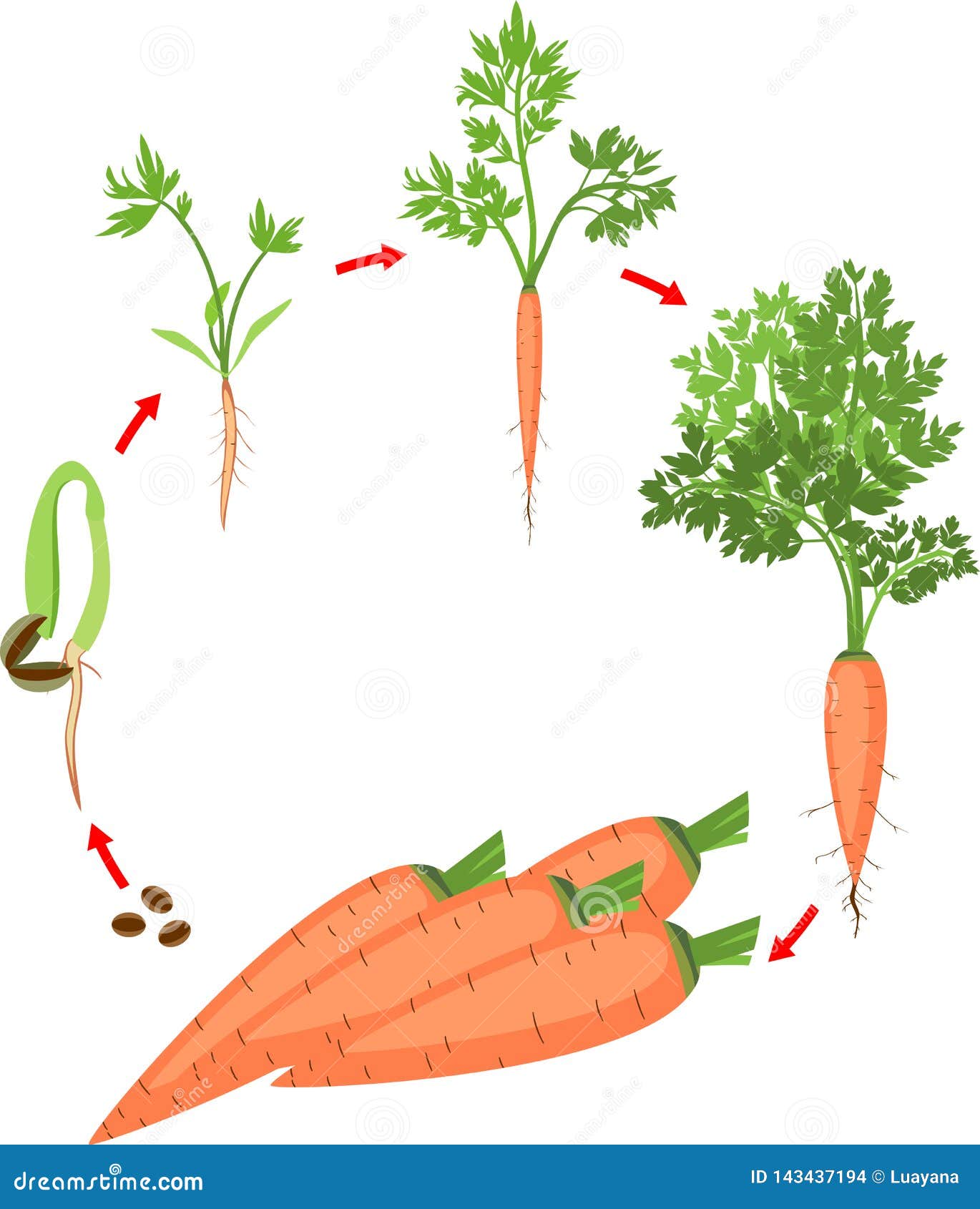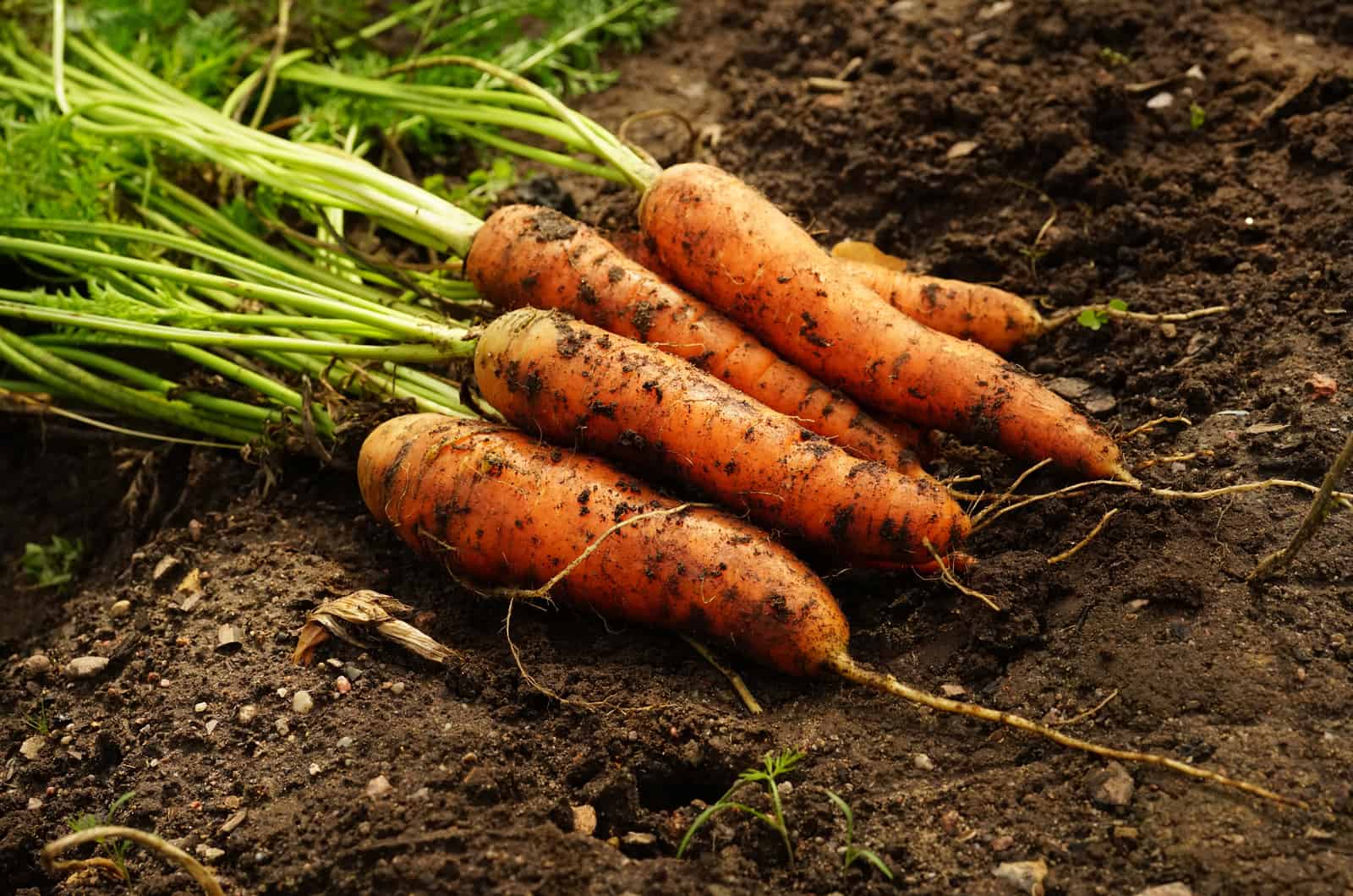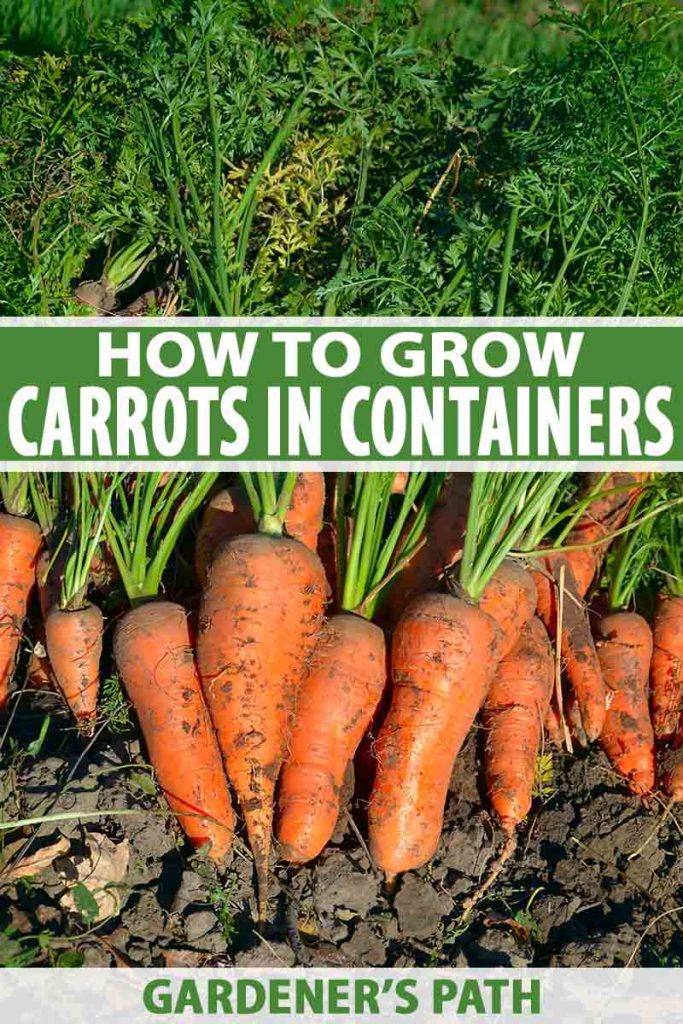Understanding the Life Cycle of Carrots
Carrots are a cool-season crop that undergoes a series of developmental stages from seed germination to harvest. Understanding the life cycle of carrots is crucial to determine the optimal growing time and ensure a successful harvest. The life cycle of carrots can be divided into several stages: germination, seedling establishment, root development, and maturation.
Germination typically occurs within 1-3 weeks after sowing, depending on factors such as soil temperature, moisture, and light. During this stage, the seed absorbs water, and the embryo begins to grow. The seedling establishment stage follows, where the seedling develops its first set of leaves and begins to photosynthesize.
As the seedling grows, it enters the root development stage, where the taproot begins to form and grow downward. This stage is critical, as it determines the size and shape of the carrot. The maturation stage is the final stage, where the carrot reaches its full size and flavor.
Knowing how long it takes for a carrot to grow is essential to plan and manage the growing process effectively. On average, it takes around 60-70 days for a carrot to mature from sowing to harvest. However, this timeframe can vary depending on factors such as weather conditions, soil quality, and the specific carrot variety.
By understanding the life cycle of carrots and the factors that influence their growth, gardeners can optimize growing conditions and techniques to achieve a successful harvest. Whether you’re a seasoned gardener or a beginner, knowing how long it takes for a carrot to grow is crucial to enjoying a bountiful and delicious crop.
Factors Affecting Carrot Growth: Soil, Climate, and More
Carrot growth is influenced by a variety of factors, including soil quality, temperature, moisture, and sunlight. Understanding these factors is crucial to optimize growing conditions and ensure a successful harvest. Soil quality, for instance, plays a significant role in carrot growth. Carrots prefer well-draining, loose soil with a pH between 6.0 and 6.8.
Temperature is another critical factor affecting carrot growth. Carrots are a cool-season crop and thrive in temperatures between 60°F and 70°F (15°C and 21°C). Temperatures above 75°F (24°C) can lead to deformed or forked roots, while temperatures below 50°F (10°C) can slow down growth.
Moisture is also essential for carrot growth. Carrots require consistent moisture, especially during the germination and root development stages. However, overwatering can lead to rot and other diseases. Sunlight is also crucial, with carrots requiring at least 6 hours of direct sunlight per day.
In addition to these factors, other environmental conditions such as wind, frost, and pests can also impact carrot growth. For example, strong winds can cause carrots to become misshapen, while frost can damage or kill the plants. Pests such as rabbits, deer, and carrot rust flies can also harm carrot crops.
To optimize carrot growth, gardeners can take several steps. First, choose a location with well-draining soil and full sun. Next, prepare the soil by loosening it to a depth of 12 inches (30 cm) and adding organic matter such as compost or manure. Finally, water carrots consistently and provide support using row covers or other techniques.
By understanding the factors that affect carrot growth and taking steps to optimize growing conditions, gardeners can enjoy a successful harvest. Whether you’re growing carrots for the first time or are a seasoned gardener, knowing how to create the right conditions is key to achieving a bountiful and delicious crop.
How to Grow Carrots: A Step-by-Step Guide
Growing carrots can be a rewarding experience, but it requires careful planning and attention to detail. To help you get started, we’ve put together a step-by-step guide on how to grow carrots. Follow these steps to ensure a successful harvest.
Step 1: Prepare the Soil
Before sowing carrot seeds, it’s essential to prepare the soil. Carrots prefer well-draining, loose soil with a pH between 6.0 and 6.8. Test your soil to determine its pH level and nutrient content. Based on the results, add organic matter such as compost or manure to improve soil fertility and structure.
Step 2: Sow Seeds
Sow carrot seeds directly in the ground in early spring or late summer/early fall, about ¼ inch deep and ¼ inch apart. You can also start seeds indoors 4-6 weeks before the last frost date and then transplant them outside. Make sure the soil is moist but not waterlogged.
Step 3: Provide Ongoing Care
Keep the soil consistently moist during the first few weeks after sowing. Once the seedlings emerge, reduce watering to about 1 inch per week. You can also use mulch to retain moisture and suppress weeds.
Step 4: Thin Seedlings
As the seedlings grow, thin them out to about 1-2 inches apart to prevent overcrowding. Use scissors to carefully cut off the weaker seedlings at soil level.
Step 5: Watch for Pests and Diseases
Keep an eye out for common carrot pests such as rabbits, deer, and carrot rust flies. Regularly inspect your plants for signs of disease such as yellowing leaves or black spots. Use organic or chemical controls as needed to prevent infestations and infections.
By following these steps, you’ll be well on your way to growing delicious and healthy carrots. Remember to be patient, as carrot growth can take time. On average, it takes around 60-70 days for carrots to mature from sowing to harvest. With proper care and attention, you’ll be enjoying a bountiful carrot harvest in no time.
Carrot Varieties: Choosing the Right Type for Your Garden
With over 400 varieties of carrots available, choosing the right type for your garden can be a daunting task. Different varieties of carrots have unique characteristics, such as flavor, texture, and color, that make them suitable for specific growing conditions and uses. In this section, we’ll explore some of the most popular carrot varieties and provide guidance on selecting the best type for your garden.
Nantes Carrots
Nantes carrots are a popular variety known for their sweet, crunchy flavor and cylindrical shape. They are relatively small, typically growing to about 6-7 inches in length, and have a bright orange color. Nantes carrots are suitable for growing in a variety of conditions and are a good choice for gardens with heavy soil.
Imperator Carrots
Imperator carrots are a larger variety of carrot, typically growing to about 9-10 inches in length. They have a more elongated shape than Nantes carrots and a slightly sweeter flavor. Imperator carrots are suitable for growing in well-draining soil and are a good choice for gardens with full sun.
Danver Carrots
Danver carrots are a popular variety known for their sweet, tender flavor and compact growth habit. They are relatively small, typically growing to about 5-6 inches in length, and have a bright orange color. Danver carrots are suitable for growing in containers or small gardens and are a good choice for gardens with limited space.
Other Carrot Varieties
In addition to Nantes, Imperator, and Danver carrots, there are many other varieties to choose from. Some popular varieties include ‘Little Finger’, ‘Thumbelina’, and ‘Atomic Red’. Each variety has its unique characteristics and growing requirements, so it’s essential to research and choose the best variety for your specific garden conditions.
When choosing a carrot variety, consider factors such as climate, soil type, and intended use. By selecting the right variety for your garden, you can ensure a successful harvest and enjoy delicious, crunchy carrots all season long. Whether you’re a seasoned gardener or just starting out, understanding the different carrot varieties can help you achieve a bountiful and flavorful crop.
The Role of Light and Temperature in Carrot Growth
Light and temperature are two essential factors that play a crucial role in carrot growth. Carrots require a specific amount of light and temperature to grow optimally, and understanding these requirements is vital for achieving a successful harvest.
Light Requirements
Carrots require full sun to partial shade, depending on the variety. In general, carrots need at least 6 hours of direct sunlight per day to grow well. However, in warmer climates, it’s essential to provide some shade to prevent scorching of the leaves and roots.
Temperature Requirements
Carrots are a cool-season crop and prefer temperatures between 60°F and 70°F (15°C and 21°C). Temperatures above 75°F (24°C) can lead to deformed or forked roots, while temperatures below 50°F (10°C) can slow down growth.
Optimal Light and Temperature Conditions
To optimize carrot growth, it’s essential to provide the right light and temperature conditions. In general, carrots prefer:
- Full sun to partial shade
- Temperatures between 60°F and 70°F (15°C and 21°C)
- Consistent moisture levels
Providing the right light and temperature conditions can help promote healthy carrot growth and increase yields. By understanding the specific requirements of your carrot variety, you can create an optimal growing environment that supports healthy growth and development.
Timing is also crucial when it comes to carrot growth. On average, it takes around 60-70 days for carrots to mature from sowing to harvest. However, this timeframe can vary depending on factors such as weather conditions, soil quality, and the specific carrot variety.
Common Challenges and Solutions for Growing Carrots
Growing carrots can be a rewarding experience, but it’s not without its challenges. From pests and diseases to nutrient deficiencies and environmental stressors, there are many potential issues that can affect carrot growth. In this section, we’ll explore some of the most common challenges and provide practical solutions and advice on how to overcome them.
Pests
Carrots are susceptible to a range of pests, including rabbits, deer, and carrot rust flies. To prevent pest damage, use row covers or other physical barriers to protect your carrot crop. You can also use organic or chemical controls, such as neem oil or pyrethrin, to deter pests.
Diseases
Carrots are also susceptible to a range of diseases, including root rot, leaf blight, and powdery mildew. To prevent disease, ensure good air circulation and water carrots carefully to avoid overwatering. You can also use organic or chemical controls, such as copper-based fungicides, to treat disease.
Nutrient Deficiencies
Carrots require a range of nutrients to grow well, including nitrogen, phosphorus, and potassium. To prevent nutrient deficiencies, use a balanced fertilizer and ensure good soil fertility. You can also use organic or chemical controls, such as fish emulsion or ammonium sulfate, to provide additional nutrients.
Environmental Stressors
Carrots are sensitive to environmental stressors, such as extreme temperatures, drought, and flooding. To prevent environmental stress, ensure good soil moisture and provide shade or other protection from extreme temperatures.
Timing is also crucial when it comes to addressing common challenges. On average, it takes around 60-70 days for carrots to mature from sowing to harvest. However, this timeframe can vary depending on factors such as weather conditions, soil quality, and the specific carrot variety.
By understanding the common challenges and solutions for growing carrots, you can take steps to prevent or address issues and ensure a successful harvest. Whether you’re a seasoned gardener or just starting out, knowing how to overcome common challenges can help you achieve a bountiful and delicious carrot crop.
Harvesting Carrots: Timing is Everything
Harvesting carrots at the right time is crucial to ensure optimal flavor, texture, and quality. Carrots that are harvested too early may be small and lack flavor, while those that are harvested too late may be overgrown and fibrous.
Signs of Readiness
So, how do you know when your carrots are ready to harvest? Here are some signs to look out for:
- The tops of the carrots begin to yellow and fall over
- The carrots are between 1/2 and 1 inch in diameter
- The carrots are firm and crunchy when pulled from the ground
Determining the Optimal Harvest Time
The optimal harvest time for carrots depends on the variety, weather conditions, and growing conditions. Generally, carrots are ready to harvest between 60 to 70 days after sowing. However, this timeframe can vary depending on factors such as temperature, moisture, and soil quality.
How to Harvest Carrots
Harvesting carrots is a simple process that requires some care to avoid damaging the roots. Here’s a step-by-step guide on how to harvest carrots:
- Use a garden fork to carefully loosen the soil around the carrots
- Gently pull the carrots from the ground, taking care not to damage the roots
- Trim the tops of the carrots to within an inch of the crown
By harvesting your carrots at the right time, you can enjoy a bountiful and delicious crop. Remember, timing is everything when it comes to harvesting carrots, so be sure to check on your crop regularly to determine the optimal harvest time.
Maximizing Your Carrot Yield: Tips and Tricks
Maximizing your carrot yield requires a combination of good growing practices, optimal growing conditions, and a few expert tips and tricks. In this section, we’ll share some expert advice on how to improve soil fertility, reduce waste, and optimize growing conditions to achieve a bountiful carrot harvest.
Improving Soil Fertility
Soil fertility is critical for healthy carrot growth. To improve soil fertility, add organic matter such as compost or manure to the soil. You can also use cover crops to add nutrients to the soil and reduce erosion.
Reducing Waste
Reducing waste is essential for maximizing carrot yield. To reduce waste, use a precision seeder to sow seeds at the optimal depth and spacing. You can also use a drip irrigation system to deliver water directly to the roots, reducing evaporation and runoff.
Optimizing Growing Conditions
Optimizing growing conditions is critical for maximizing carrot yield. To optimize growing conditions, ensure good air circulation and provide adequate moisture. You can also use row covers to protect the carrots from pests and diseases.
Expert Tips and Tricks
Here are a few expert tips and tricks to help you maximize your carrot yield:
- Use a soil test to determine the optimal fertilizer application rate
- Plant carrots in blocks rather than rows to reduce waste and improve air circulation
- Use a carrot harvester to reduce damage to the roots during harvest
By following these tips and tricks, you can maximize your carrot yield and enjoy a bountiful harvest. Remember, timing is everything when it comes to growing carrots, so be sure to check on your crop regularly to determine the optimal harvest time.
On average, it takes around 60-70 days for carrots to mature from sowing to harvest. However, this timeframe can vary depending on factors such as weather conditions, soil quality, and the specific carrot variety.




:max_bytes(150000):strip_icc()/how-to-grow-carrots-in-the-vegetable-garden-1403472-04-02bdfb51839a4368937530610b51f8c9.jpg)


